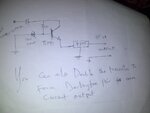Afzal hossain
Newbie level 6
Dear experts,
I need to protect a lm-7805 from 24V or12V car battery surge current and surge voltage.Is there any simplest solution to serve my purpose ?
As far I know a car battery produce around 200A while getting start and about 1000V at stop . I studied about MOV and NTC thermistor ,but I am not getting clear concept about choosing the accurate value of these stuffs.waiting for your valuable response .
I need to protect a lm-7805 from 24V or12V car battery surge current and surge voltage.Is there any simplest solution to serve my purpose ?
As far I know a car battery produce around 200A while getting start and about 1000V at stop . I studied about MOV and NTC thermistor ,but I am not getting clear concept about choosing the accurate value of these stuffs.waiting for your valuable response .
